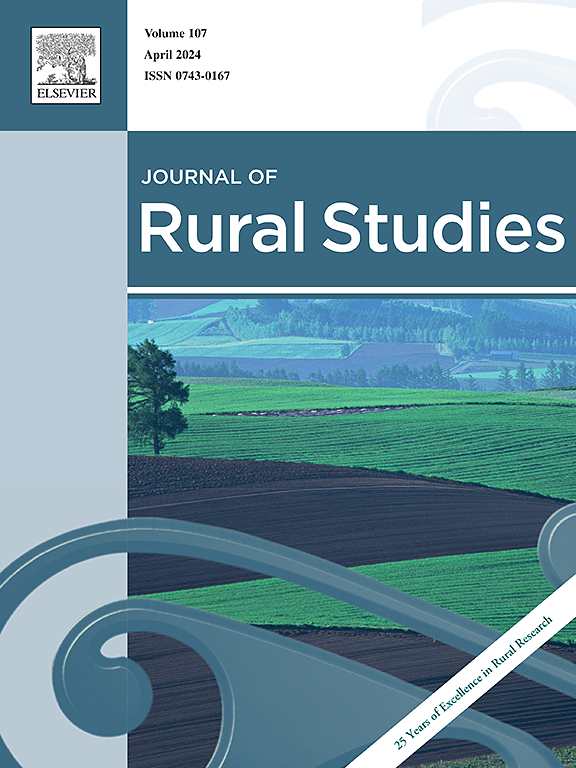A (European) recipe for Latin America? Insights from five agri-food geographical indications in Peru and Ecuador
IF 5.7
1区 社会学
Q1 GEOGRAPHY
引用次数: 0
Abstract
Geographical Indications (GI) for agri-food products, as first developed in Europe, are gaining momentum globally, based on their assumed potential as rural development tools. However, to date, academic research has paid limited attention to their ability to meet the actual objectives of the stakeholders using them in other contexts, such as Latin America. To this end, the present paper analyses five case studies of GI designations, three in Peru and two in Ecuador. A qualitative method centred on the gathering of semi-structured interview data from different actors involved in the development and management of these GIs has been adopted. The analysis of these cases shows that these designations are valued, primarily, as tools for accessing international markets. Yet, the results also point to other objectives, most notably the contribution they can make to product differentiation and the empowerment of producers along the food chain. However, this article identifies a series of obstacles that hinder the meeting of these expectations, including a lack of alignment with the supply chain and market demands, and the multiple scales at which a GI has to be governed. Moreover, it is evident that the GIs are often granted without any consideration of the objectives and expectations of local actors. This appears to explain why, in some of the cases analysed, the GIs continue to exist solely on paper.
拉丁美洲的(欧洲)配方?秘鲁和厄瓜多尔五个农产品地理标志的启示
农业食品的地理标志(GI)最初是在欧洲开发的,基于其作为农村发展工具的潜力,正在全球范围内获得发展势头。然而,迄今为止,学术研究对它们满足利益相关者在其他情况下(如拉丁美洲)使用它们的实际目标的能力关注有限。为此,本文分析了地理标志指定的五个案例研究,三个在秘鲁,两个在厄瓜多尔。采用了一种定性方法,集中收集参与开发和管理这些地理信息系统的不同行动者的半结构化访谈数据。对这些案例的分析表明,这些指定的价值主要是作为进入国际市场的工具。然而,研究结果也指向了其他目标,最值得注意的是,它们可以为产品差异化做出贡献,并赋予食物链上的生产者权力。然而,本文指出了一系列阻碍满足这些期望的障碍,包括缺乏与供应链和市场需求的一致性,以及必须对地理标志进行治理的多个尺度。此外,很明显,在授予地理标志时往往没有考虑到当地行动者的目标和期望。这似乎解释了为什么在分析的一些案例中,地理标志继续只存在于纸上。
本文章由计算机程序翻译,如有差异,请以英文原文为准。
求助全文
约1分钟内获得全文
求助全文
来源期刊

Journal of Rural Studies
Multiple-
CiteScore
9.80
自引率
9.80%
发文量
286
期刊介绍:
The Journal of Rural Studies publishes research articles relating to such rural issues as society, demography, housing, employment, transport, services, land-use, recreation, agriculture and conservation. The focus is on those areas encompassing extensive land-use, with small-scale and diffuse settlement patterns and communities linked into the surrounding landscape and milieux. Particular emphasis will be given to aspects of planning policy and management. The journal is international and interdisciplinary in scope and content.
 求助内容:
求助内容: 应助结果提醒方式:
应助结果提醒方式:


